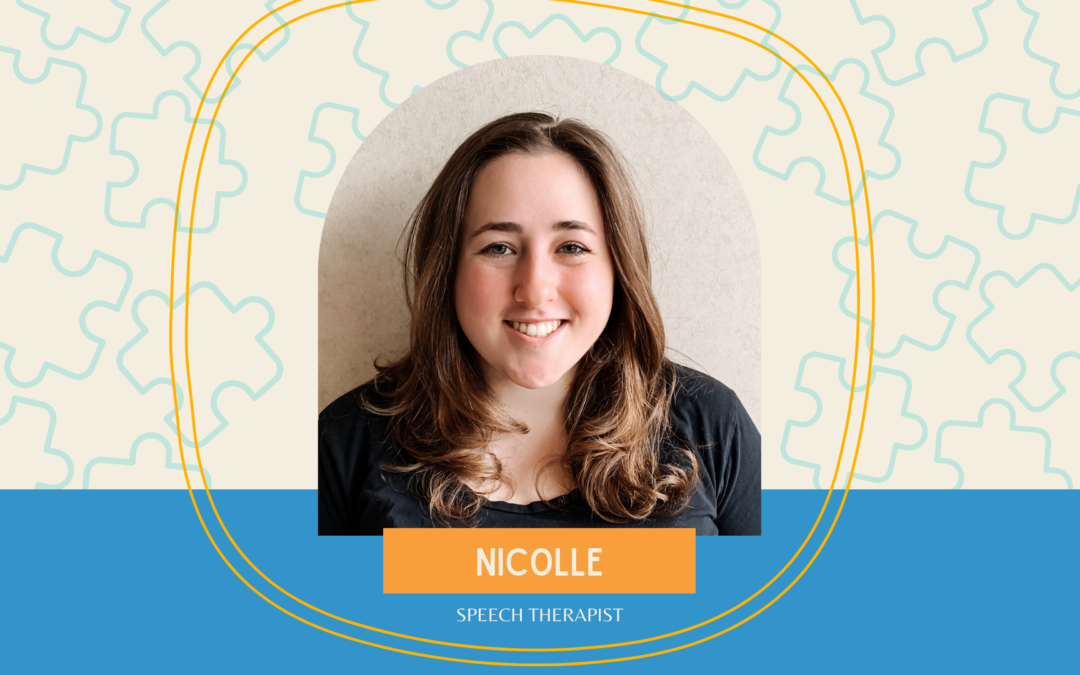Hello! This is Nicolle, Partners in Excellence – Minnetonka’s speech therapist. Despite our titles, speech therapists (also called speech-language pathologists, or SLPs) target much more than “speech.” Over the course of our careers, we provide therapy for fluency (stuttering); voice and resonance; language; cognition; hearing; swallowing; social communication; and finally, articulation disorders – which will be the focus of today’s blog.
When speech therapists hear the word “speech,” we think “articulation.” Articulation is how precisely someone produces individual speech sounds. We are each born not yet knowing our eventual native language or how to articulate its unique speech sounds, and as we grow up, we slowly learn. Most children will learn to articulate speech sounds around the same ages as their peers do. When a child has difficulty articulating a speech sound beyond the average age that most children learn to produce it by, the child may be referred to a speech therapist for an evaluation to determine if they have a speech sound disorder and if treatment is recommended.
Speech therapists probably got their title because of how common speech sound disorders are, especially among children. We do a lot of articulation therapy! There is no known cause for speech sound disorders that aren’t the direct result of a motor or neurological disorder, hearing impairment, or structural difference (cleft lip/palate, injury, etc.). Depending on a child’s motivation or cognitive ability to participate in therapy and monitor their own articulation, speech therapy can be helpful for improving articulation deficits over time. How long and at what intensity a child might need speech therapy for their speech sound disorder varies greatly. It is highly encouraged that children target their articulation goals at home for additional practice and to help generalize skills across settings.
Here’s some tips for how to target articulation at home:
- Ask what your child’s articulation goals are in speech therapy. Reach out to your child’s speech therapist and find out what speech sounds they’re currently working on, as well as in which contexts. Are they targeting the “s” sound? Are they learning how to make it in the beginning of single words, or in all positions of words and in short phrases? This will guide your expectations of what your child is able to do and what might still be too challenging.
- Find out what already works. While you’re asking your child’s speech therapist what sounds they’re targeting, you might as well ask what seems to help them articulate it correctly! Some kids respond well to verbal prompts such as “lift your tongue up,” while others may show improvement when they can practice in front of a mirror or see a consistent hand gesture that reminds them of their sound.
- Decide what fits in with your family’s routine. Some kids can attend to five minutes of flashcards, while others benefit more from natural practice. Naming foods on the table that contain their target sound during dinner can be just as effective as committing to targeting five words in front of the mirror after brushing teeth.
- Remember, quality over quantity. Taking extra care to help your child articulate their target sound correctly in two out of five words can be more meaningful than running through fifteen words until you reach perfection.
- Remember, the practice WAS worth it. Even if your child is unable to articulate their target sound during practice, the practice was worth it. They were able to watch and listen to an adult model the correct way to produce the sound, and they were given the opportunity to try it themselves. You may not always be able to see what they gain from one practice session until the next one.
- Seek additional help and resources if you need to. The internet is full of some excellent resources for targeting articulation. Type “How to make the L sound” into YouTube and you’ll discover numerous videos that break it down. Peachie Speechie and Turtlediary are two great channels on YouTube to watch if you or your child is a visual learner. Mommyspeechtherapy.com is a website with some additional excellent, free resources and education. She has free pdf files of words that contain common target sounds divided by their placement in a word. Last but not least, reach out to your child’s speech therapist – we love to share ideas for how to practice at home.
American Speech-Language-Hearing Association. (n.d.). Speech sound disorders: Articulation and phonology. Speech Sound Disorders: Articulation and Phonology. https://www.asha.org/Practice-Portal/clinical-Topics/Articulation-and-Phonology/.
Hanks, H. (n.d.). Free downloads. Mommy Speech Therapy. http://mommyspeechtherapy.com/?page_id=55.
Peachie SPEECHIE videos – how to say the R sound and many more! Peachie Speechie. (n.d.). https://peachiespeechie.com/pages/peachie-speechie-videos.


Recent Comments